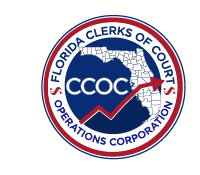As a customer in the public sector, you can buy merchandise and add on to your account for each new item purchased. This convenience provides one overall balance. It makes it easier for the customer but also easier for the company to monitor balances, make notifications, and pursue payments to the same individual.
In compliance service payment plans create terms, track due dates, and collect payments from customers. At times, multiple cases come in for one customer. Each has fines. Many with different due dates. It becomes difficult to keep up with.

While court fines are not identical to consumer purchases, each has a total balance, terms for payment, and procedures for following up on accounts that are past due.
Court fines come in with every judicial sentence. Those paying often struggle to pay and installments can be low. The tricky part is how to work with many cases for one customer. It happens in multiple ways.
- Some offices create a separate payment plan for each case and charge the payment plan fee for each plan initiated. This method provides an easier method to spread installments one each individual case.
- Some offices create a separate plan for each case but only charge one plan fee for all cases entered at one time. This method limits the payment plan fee to the customer and applies money more immediately to case balances.
- Some offices create one plan for all cases and charge one payment plan fee for all involved cases. This plan provides the simplest method for customers to keep up with due dates and payments. It also provides 1 plan to create notices for and improves processing time.
The most often asked question is how do I distribute a single payment to all cases involved in the payment? Each case has a priority for distribution and if installment amounts are low very little goes against each case.
The most effective way to collect is to prioritize one of the cases to receive payments. This would usually be the oldest case. If all cases are the same I would recommend that you pay off the case with the smallest amount. This reduces the number of cases open.
But what about the cases receiving no payments, wouldn’t they be late? For those cases in the plan not receiving money, nothing happens to them as long as the customer keeps up with the agreed-upon plan payment. If a plan becomes delinquent then all cases in the plan are now delinquent.
What happens if a new case comes up during the payment plan end date? Since you will still be working with the same customer you could bring in the new case to their plan. But since it came in later a payment plan fee should be collected for this revised agreement.
RECOMMENDATION
Create 1 payment plan for all cases initiated at the same time for a customer with only 1 payment plan fee.
The thing to keep in mind is how to best manage payment plans that encourage participation and keep defaults low. By grouping cases in plans, the process becomes easier for both the customer and the compliance office.
Don Murphy is the Principal and Senior Consultant for CIS which provides consulting and training for courts and local government. He is a nationally certified court professional as a Fellow with the National Center for State Courts and has over 25 years of court administration experience.

